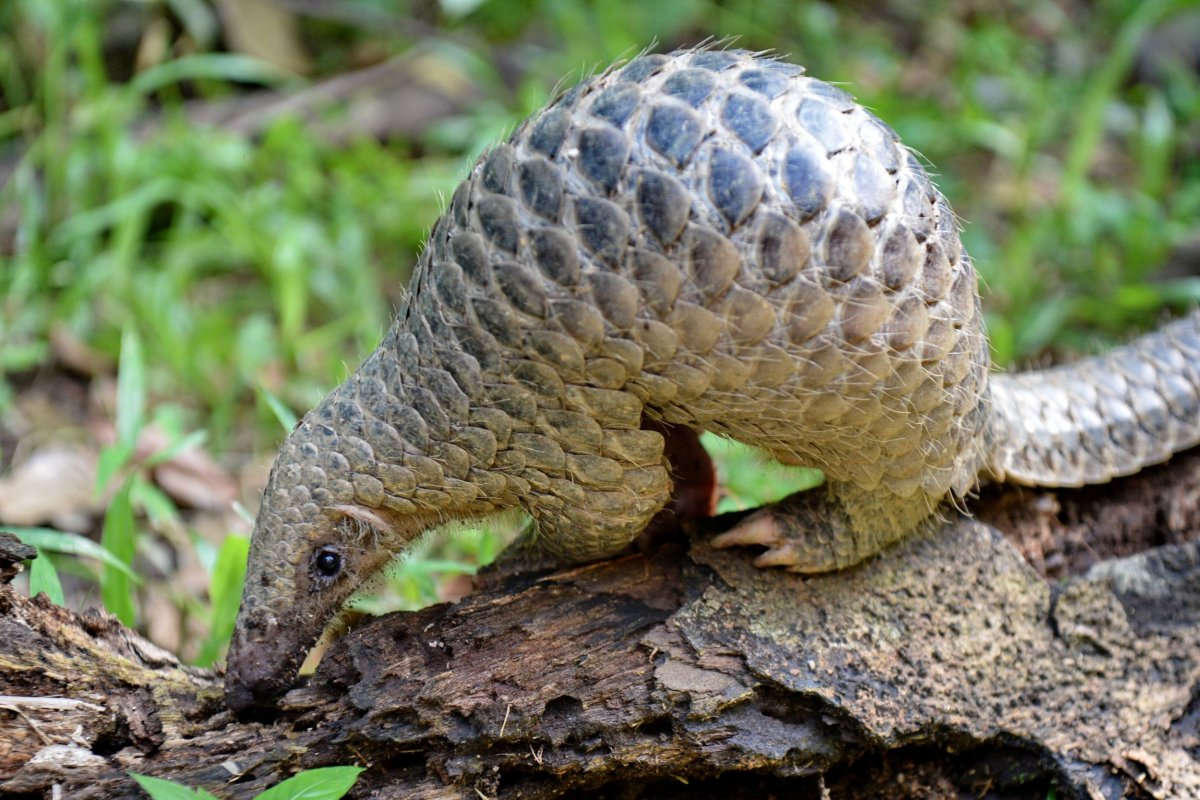
Pangolins have been in the spotlight a few times in the recent past, even the subject of Google Valentine's Week doodles in 2017. But this time, the endangered mammals are making headlines for something less heartwarming.
An executive at a Chinese company was on a private tour when he consumed a dish that included pangolin. He posted photos of the pangolin dish to his personal social media accounts, the South China Morning Post reported. The company, Yintai, released a statement Sunday that said the employees who were involved in the incident had their contracts with the company terminated.
The mammals are small scaly animals that have a full-body armor of thick scales. They can curl up into a ball to protect themselves when threatened and have a tail made up of sharper scales for defense.
In 2015, officials in Vietnam seized more than 40 of the animals from poachers and then sold them to restaurants, where the animals, which are viewed as a delicacy, were then killed for meals, The Guardian reported. Some estimates of how many pangolins are killed each year are in the millions.
There are eight breeds of pangolin total, and the animals are found in parts of Africa and Asia. Of those eight, all are protected under national and international laws, according to the World Wildlife Fund. Two of the species are considered critically endangered, two endangered and the others vulnerable by the International Union for Conservation of Nature and Natural Resources. Populations of all eight species are thought to be in decline.
Eight Facts About Pangolins
Pangolins consume insects, including ants and termites, for most of their diet.
Their poor eyesight causes them to rely on their other senses, like smell and hearing.
Pangolins are one of the most trafficked animals in some parts of the world even though they're protected animals.
Like anteaters, pangolins don't actually have teeth. They do have long tongues, though, which help them consume the insects they rely on for nutrition.
The mammals eat tiny rocks and pebbles to help break down their food and make it easier to digest.
Pangolins are the only mammals covered in scales.
Sometimes their scales are used for what some think are natural remedies for asthma and arthritis.
They can actually close their ears and their nostrils to keep the insects they feed on from crawling into the openings.

Uncommon Knowledge
Newsweek is committed to challenging conventional wisdom and finding connections in the search for common ground.
Newsweek is committed to challenging conventional wisdom and finding connections in the search for common ground.
About the writer
Nina was a breaking news reporter. She previously worked at Business Insider, The Boston Globe, and Boston.com.
To read how Newsweek uses AI as a newsroom tool, Click here.








